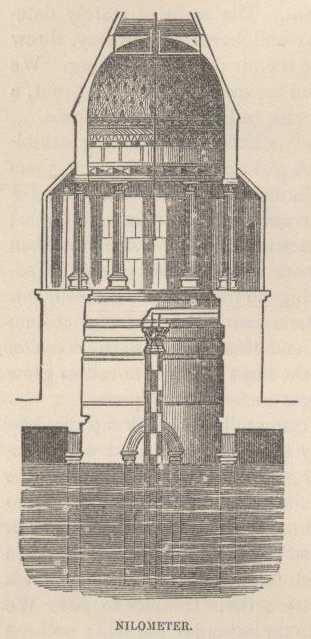 On the island at our right was the machine they call the Nilometer, a stone-column whose business it is to mark the rise of the river and prophecy whether it will reach only thirty-two feet and produce a famine, or whether it will properly flood the land at forty and produce plenty, or whether it will rise to forty-three and bring death and destruction to flocks and crops—but how it does all this they could not explain to us so that we could understand.
On the island at our right was the machine they call the Nilometer, a stone-column whose business it is to mark the rise of the river and prophecy whether it will reach only thirty-two feet and produce a famine, or whether it will properly flood the land at forty and produce plenty, or whether it will rise to forty-three and bring death and destruction to flocks and crops—but how it does all this they could not explain to us so that we could understand.
On the same island is still shown the spot where Pharaoh’s daughter found Moses in the bulrushes. Near the spot we sailed from, the Holy Family dwelt when they sojourned in Egypt till Herod should complete his slaughter of the innocents. The same tree they rested under when they first arrived, was there a short time ago, but the Viceroy of Egypt sent it to the Empress Eugenie lately. He was just in time, otherwise our pilgrims would have had it.
The Nile at this point is muddy, swift and turbid, and does not lack a great deal of being as wide as the Mississippi. We scrambled up the steep bank at the shabby town of Ghizeh, mounted the donkeys again, and scampered away. For four or five miles the route lay along a high embankment which they say is to be the bed of a railway the Sultan means to build for no other reason than that when the Empress of the French comes to visit him she can go to the Pyramids in comfort. This is true Oriental hospitality. I am very glad it is our privilege to have donkeys instead of cars.